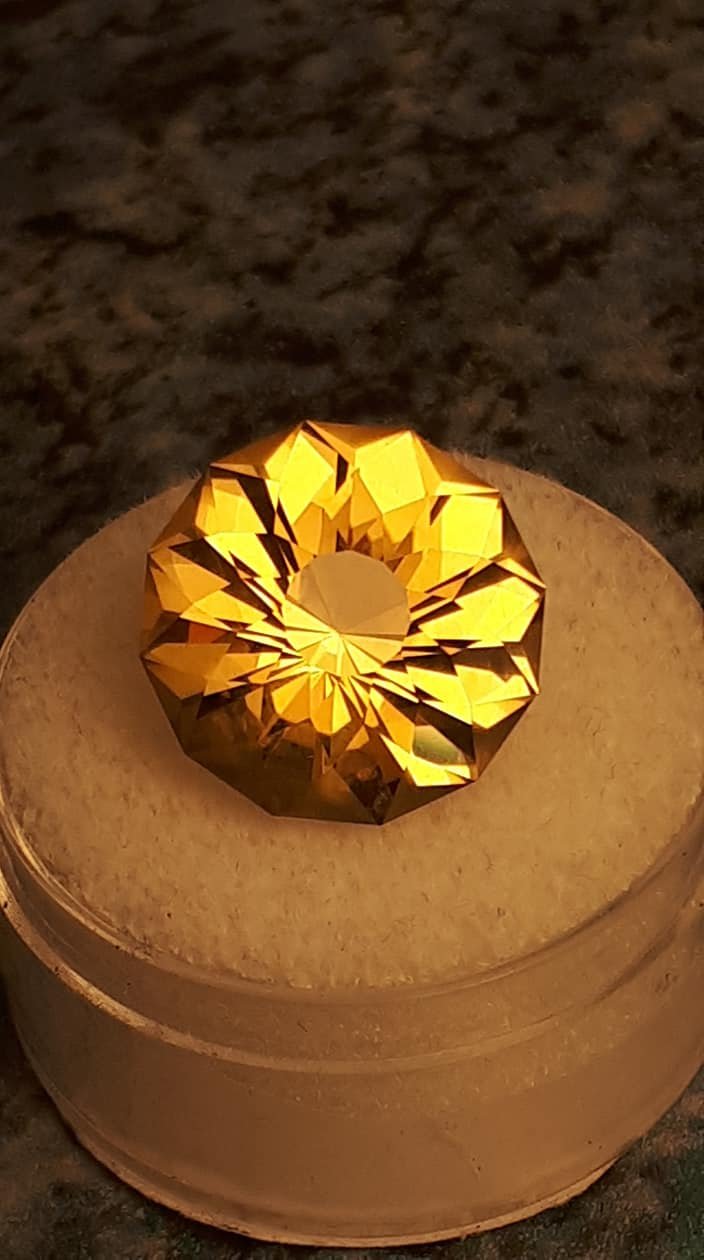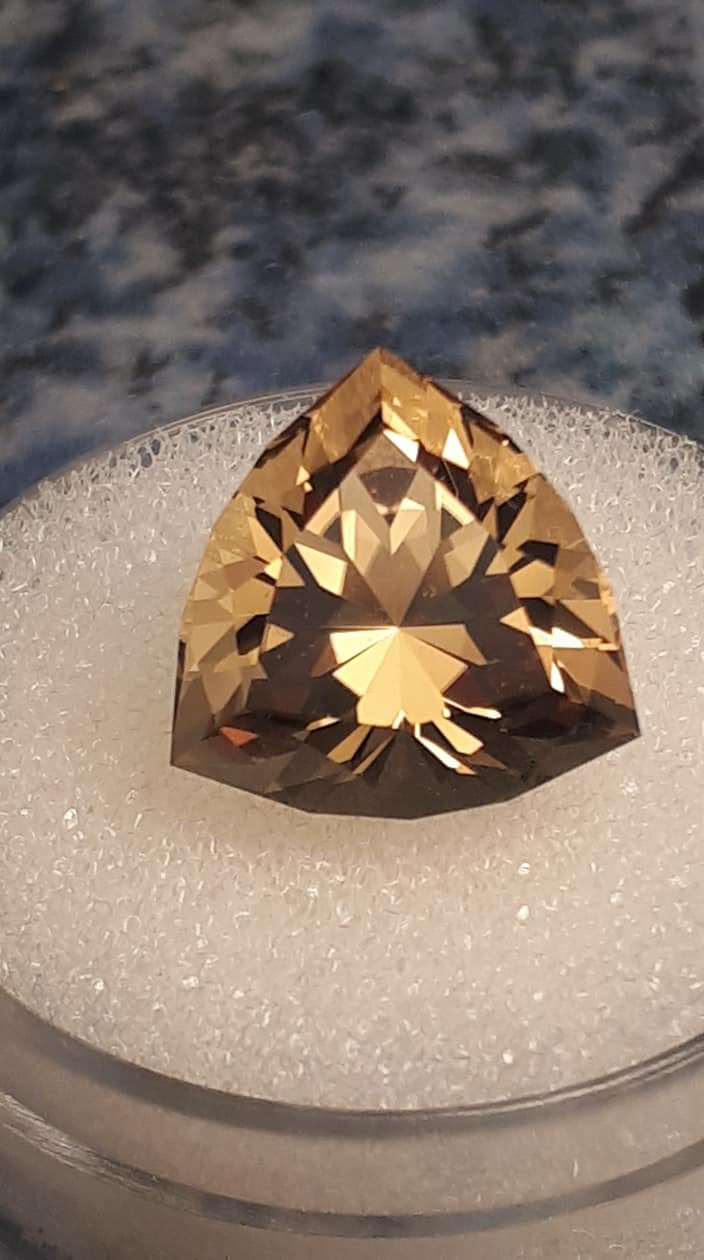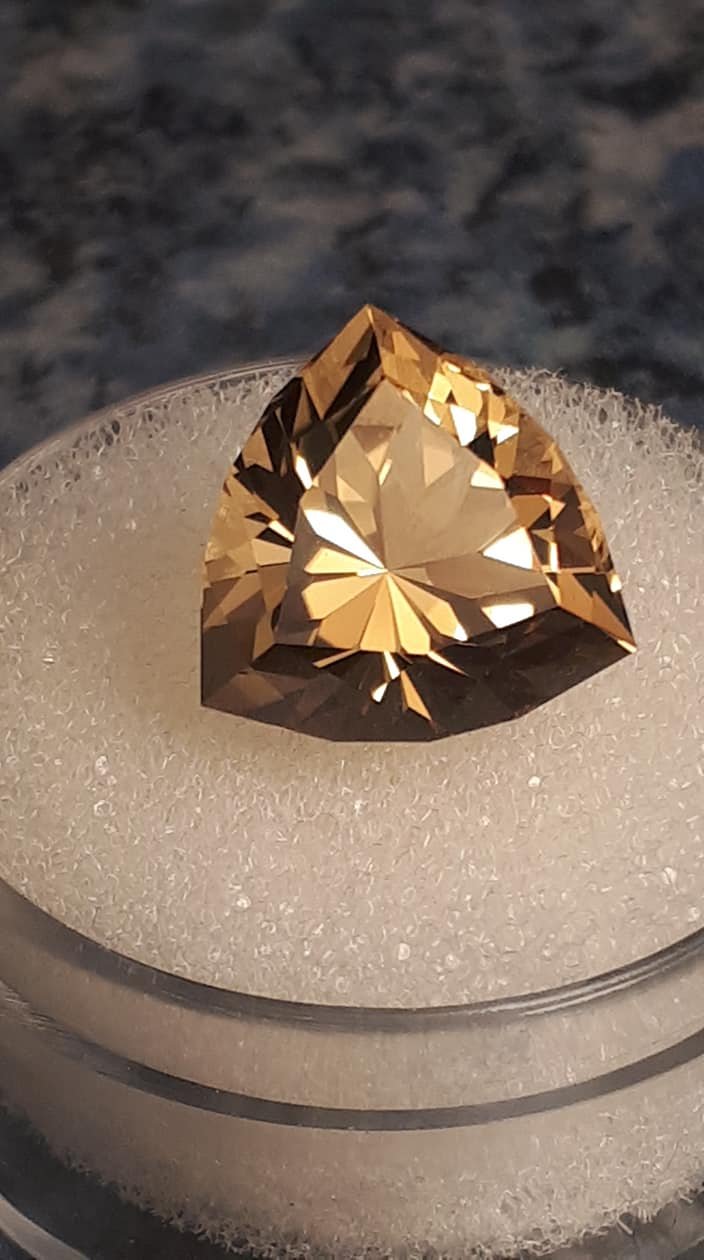- Joined
- May 1, 2014
- Messages
- 1,958
- Reaction score
- 2,530
Seriously wondering if this can be the case? Here's two stones I cut from the same piece of citrine rough. Place them side by side and the colour is identical as seen by the eye - as expected since they are "twins" from out of the same large rough stone. However, the camera has other ideas, despite all the photographing conditions being the same. With the round stone, the camera played nice and showed the colour exactly as the eye sees it. However, with the triangle/shield, the camera decided to see it as having a slightly brownish or "ginger beer" tint to it, which it does not. I can't photograph the two together since the first one went to a new home just after the second one was completed.

And two photos of the above stone's twin brother....


Since the camera tends not to perceive things exactly as the human eye does, is it possible that the way different designs reflect light differently within them may affect how the camera picks that light up?

And two photos of the above stone's twin brother....


Since the camera tends not to perceive things exactly as the human eye does, is it possible that the way different designs reflect light differently within them may affect how the camera picks that light up?



